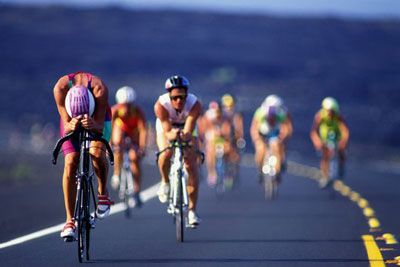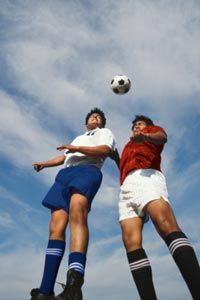You already know that exercise is good for you, but are some sports better at keeping the grim reaper at bay?
One of the most significant scientific studies focused on the question came out of Scandinavia in 1993. Researchers divided 2,613 elite male Finnish athletes into three groups -- endurance athletes (long-distance runners and cross-country skiers, for example), and power athletes (boxers, wrestlers, weight lifters) and a mixed group of team athletes (like soccer, ice hockey or basketball players) and sprinters. The researchers then compared those male athletes to 1,712 Finnish men who were not competitive athletes. The power athletes lived an average of 1.6 years longer than nonathletes, team athletes lived four years longer and endurance athletes lived 5.7 years longer [source: Sarna et al.].
Let's consider what sets endurance sports apart. The American Medical Association published a study in 2001, looking at VO2 max, the maximum amount of oxygen a particular body can take in during exercise. Sports requiring a high VO2 max make you breathe the hardest -- such as running or biking -- as your body tries to get precious oxygen to your muscles. The study showed elite athletes had a lower chance of dying at a given age than nonathletes, but how much lower depended on VO2 max. Endurance athletes had a 43 percent lower chance of dying at a given age than nonathletes. Team athletes had 33 percent less risk, while power athletes whose sports don't require a high VO2 max, only got a 10 percent protection [source: Kujala et al.].
These studies don't cover every angle, though. Scientists gathered information about the cause of death and age of each participant, but they didn't consider what the men had done after they stopped competing in sports. Competitive athletes are generally young -- the average age of NFL players is 27 [source: Sando]. Studies have shown that staying active throughout your entire life is a very big deal when it comes to your health, so the math geek who takes up running after college and keeps at it will probably live longer than the football hero who hangs up his cleats and hits the recliner once his glory days are over [source: Paffenbarger].
Don't count team sports and resistance training out, either. They may not boost longevity quite as much as endurance sports, but they are an important part of the picture. Team sports can teach youth about discipline, camaraderie and sportsmanship, and are a healthy way to bond with friends. Resistance training helps prevent muscle wasting that happens with aging and reduces strength, coordination and quality of life during a person's golden years [source: Johnston et al.]. Resistance training also strengthens bones for a healthy life [source: Kravitz]. Cross-training helps prevent overuse. Varying your workout will keep you from getting bored and let you tap into the unique benefits of different types of exercise.
Some sports can actually present a threat to longevity. Which ones? Read on to learn more.



